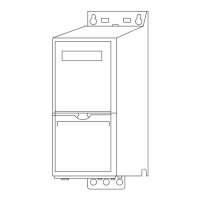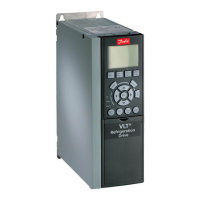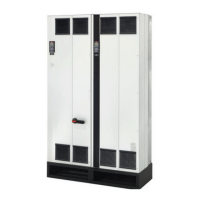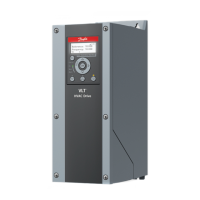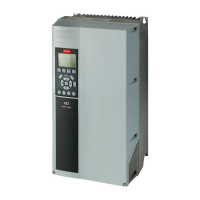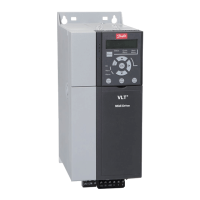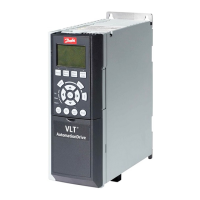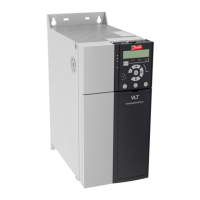Parking
This function is the recommended choice for applications
where the motor is rotating at slow speed, e.g., windmilling
in fan applications. 2-06 Parking Current and 2-07 Parking
Time can be adjusted. Increase the factory setting of these
parameters for applications with high inertia.
Start the motor at nominal speed. If the application does not
run well, check the VVC
plus
PM settings. Recommendations in
different applications can be seen in Table 5.6.
Application Settings
Low inertia applications
I
Load
/I
Motor
<5
1-17 Voltage filter time const. to be
increased by factor 5 to 10
1-14 Damping Gain should be
reduced
1-66 Min. Current at Low Speed should
be reduced (<100%)
Low inertia applications
50>I
Load
/I
Motor
>5
Keep calculated values
High inertia applications
I
Load
/I
Motor
> 50
1-14 Damping Gain, 1-15 Low Speed
Filter Time Const. and 1-16 High Speed
Filter Time Const. should be increased
High load at low speed
<30% (rated speed)
1-17 Voltage filter time const. should
be increased
1-66 Min. Current at Low Speed should
be increased (>100% for a prolonged
time can overheat the motor)
Table 5.6 Recommendations for Different Applications
If the motor starts oscillating at a certain speed, increase
1-14 Damping Gain. Increase the value in small steps.
Depending on the motor, a good value for this parameter
can be 10% or 100% higher than the default value.
Starting torque can be adjusted in 1-66 Min. Current at Low
Speed. 100% provides nominal torque as starting torque.
5.4.5
Automatic Energy Optimization (AEO)
NOTICE!
AEO is not relevant for permanent magnet motors.
Automatic Energy Optimization (AEO) is recommended for
•
Automatic compensation for oversized motors
•
Automatic compensation for slow system load
change
•
Automatic compensation for seasonal changes
•
Automatic compensation for low motor loading
•
Reduced energy consumption
•
Reduced motor heating
•
Reduced motor noise
To activate AEO, set parameter 1-03 Torque Characteristics to
[2] Auto Energy Optim. CT or [3] Auto Energy Optim. VT.
5.4.6
Automatic Motor Adaptation (AMA)
NOTICE!
AMA is not relevant for permanent magnet motors.
Automatic motor adaptation (AMA) is a procedure that
optimizes compatibility between the adjustable frequency
drive and the motor.
•
The adjustable frequency drive builds a
mathematical model of the motor for regulating
output motor current. The procedure also tests the
input phase balance of electrical power. It compares
the motor characteristics with the data entered in
parameters 1-20 to 1-25
•
The motor shaft does not turn and no harm is done
to the motor while running the AMA.
•
Some motors may be unable to run the complete
version of the test. In that case, select [2] Enable
reduced AMA.
•
If an output filter is connected to the motor, select
Enable reduced AMA.
•
If warnings or alarms occur, see 7.3 List of Warnings
and Alarms.
•
Run this procedure on a cold motor for best results.
Commissioning
VLT
®
HVAC Drive Instruction Manual
30 MG11AJ22 - Rev. 2013-09-13
55
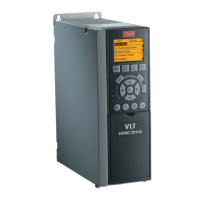
